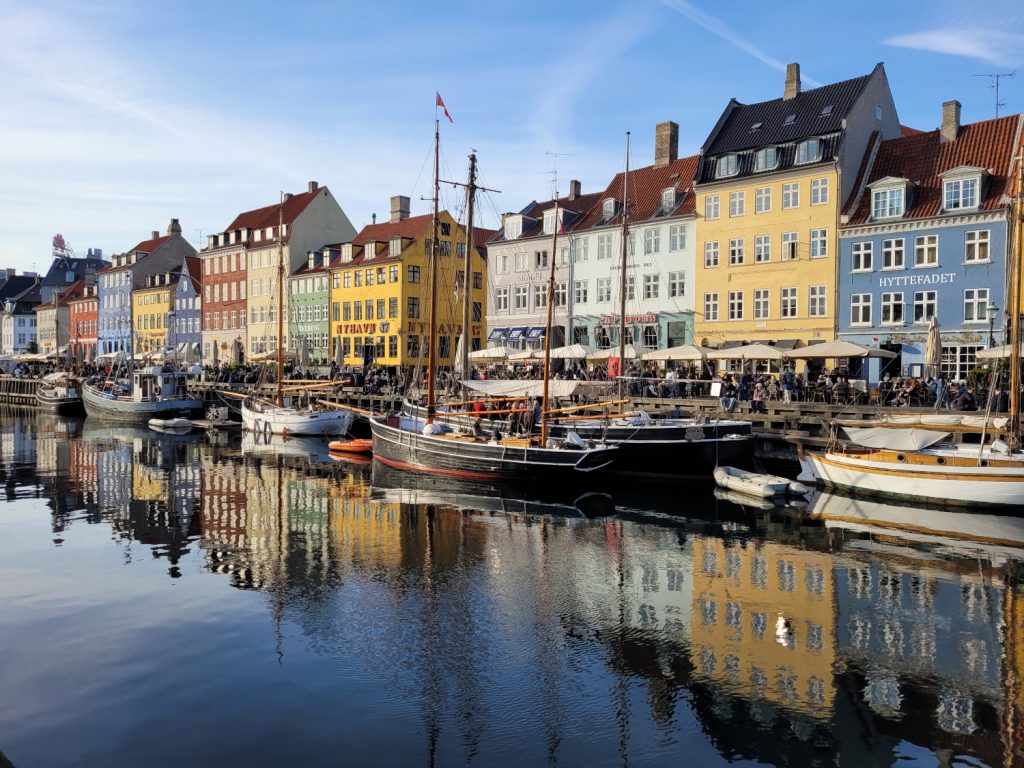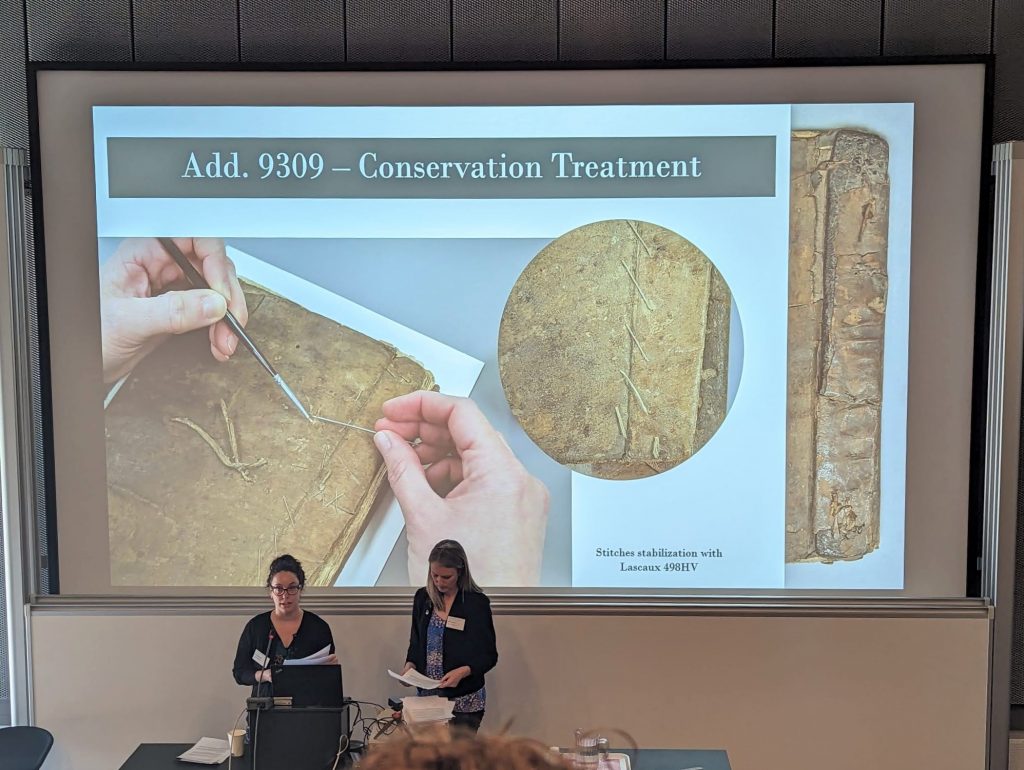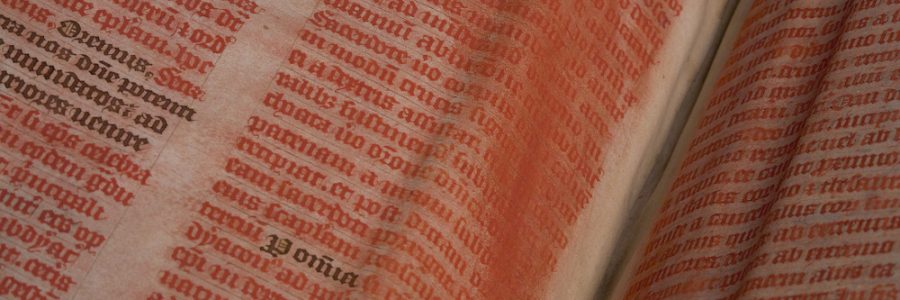
Taking Curious Cures from Cambridge to Copenhagen
Our Curious Cures in Cambridge Libraries project conservators Marina Pelissari and Rachel Sawicki recently presented a paper at the Care and Conservation of Manuscripts Seminar in Copenhagen. Presenting to an audience of conservators and manuscript scholars, the talk explored the amazing and unique features of medieval medical manuscripts and highlighted some of the conservation challenges within the Curious Cures project. You can read their report here:
The Care and Conservation of Manuscripts conference runs biennially and is the leading programme for the presentation of scholarly research in the field of manuscript conservation. The seminar premiered in 1994 at the Arnamagnæan Institute at the University of Copenhagen, where a cohort of 30 participants gathered around a table and examined manuscripts together. The creation of the seminar encouraged innovative ideas for the conservation and preservation of manuscripts and was modelled on the informal meetings of Cambridge University’s Research Group on Manuscript Evidence based at the Parker Library, Corpus Christi College. Over the past 3 decades, the seminar has grown into an international event and over 60 speakers and 300 in-person and online participants attended this year. The research and conservation projects shared during the seminar and published in the conference proceedings are of great importance and reference in manuscript studies.
The UL’s conservators have long participated in the conference, presenting papers relating to the conservation of Genizah fragments and Greek manuscripts, amongst others. This year, Marina and Rachel shared information about the Curious Cures in Cambridge Libraries project: a two-year project to conserve, catalogue, and digitise 186 medieval medical manuscripts from across Cambridge University’s collections. Funded by the Wellcome Trust, the project focusses on medieval manuscripts that contain medical recipes. The project brings together unique books from the University Library, the Fitzwilliam Museum and twelve Cambridge college libraries.
Conservation work for the project includes on-site condition assessments at the various college libraries, arranging safe transportation of manuscripts to the University Library, carrying out remedial treatments in our conservation studio, and supporting the cataloguing and digitisation teams in their work to capture the recipes and images from these wonderful texts.
The purpose of the talk was to help illuminate medieval medical book culture in Europe and share some of the complex conservation treatments that are currently underway in the UL’s Conservation Department. This included two conservation case studies: pigment consolidation techniques for powdering vermilion ink in MS Add. 451, a sumptuous late 14th/early 15th century liturgical manuscript thought to have been made for Robert Braybrooke (b. 1336/37, d. 1404), bishop of London; and the repair of heavily damaged paper in MS Add. 9309, a modest but characterful notebook from the 15th century, which contains a collection of 225 medical recipes and charms in Middle English and Latin. Both of these manuscripts will be appearing on the Cambridge Digital Library after their treatments have been completed and they can be digitised safely.
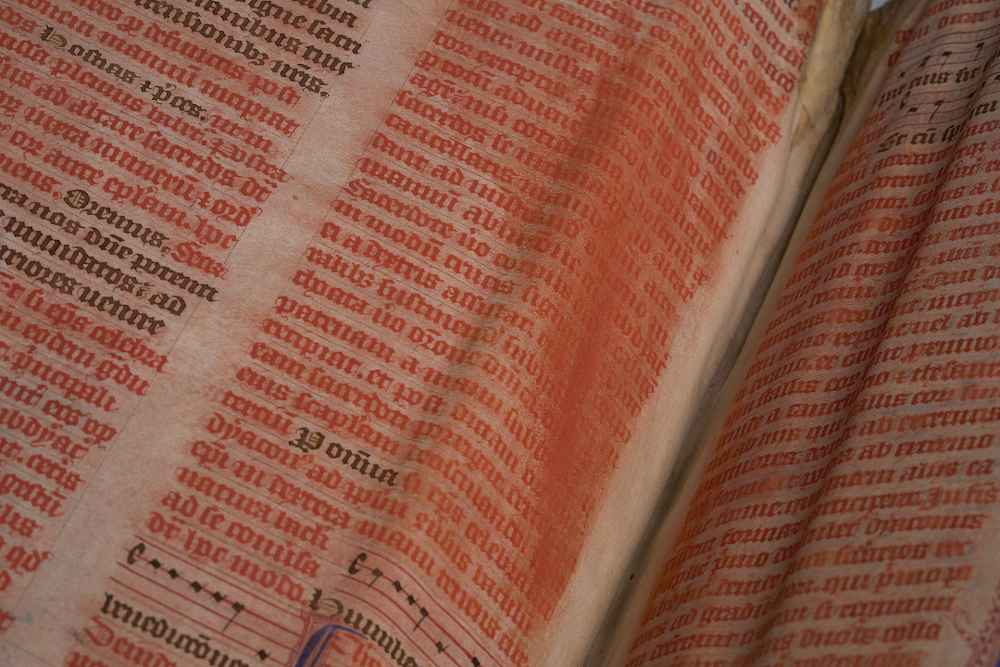
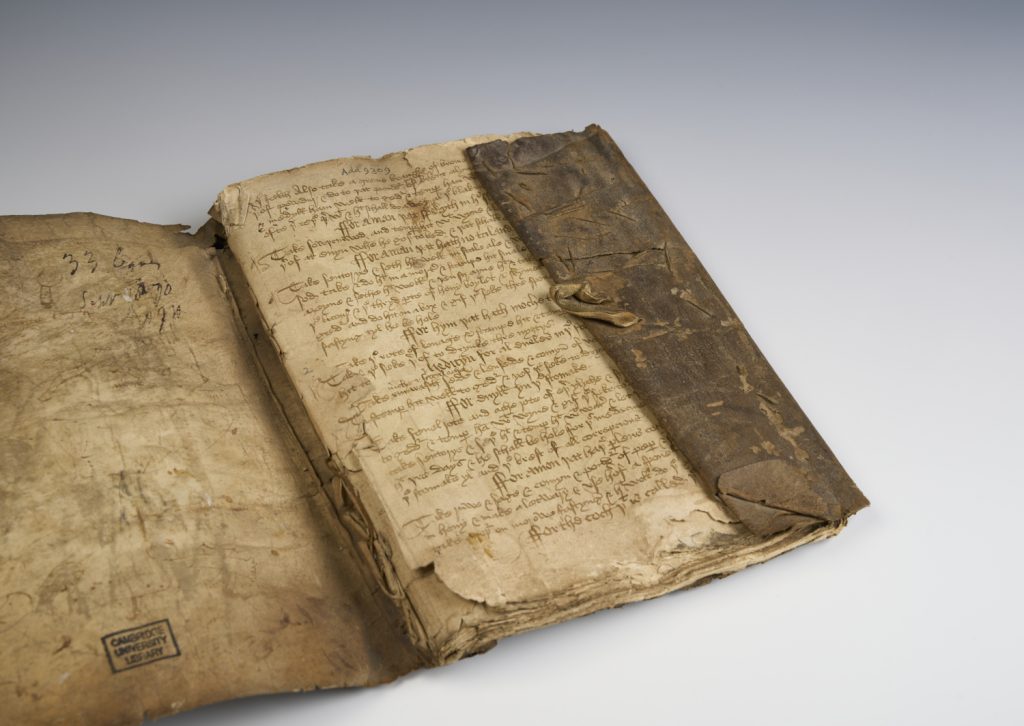
Some of the programme highlights included insights from Conservators working in Ireland with war damaged archives and their efforts to restore access; how pollen grains collected from manuscript gutters in Scotland are helping track geographical origins and travels; the use of micro-CT scanning for examining sewing structures hidden beneath covering materials; and the materiality of Jewish writing substrates and the uniqueness of skin preparation across different cultures.
Participating in this seminar was an amazing experience for our Conservation team members, providing connections with manuscript specialists from conservation, science, academic, museum, library, and archive backgrounds. The interconnections between conservation, science, and research are becoming more embedded in conservation practice, making this a very exciting time to be working in the field.
Curious Cures in Cambridge Libraries is a unique project, filled with intriguing material that is helping to illuminate medieval medical culture in Europe. You can read more about Marina and Rachel’s conservation work in the forthcoming conference proceedings (2024). In the meantime, please stay tuned for further posts about some of the curious cures being applied to our medieval medical treasures.

